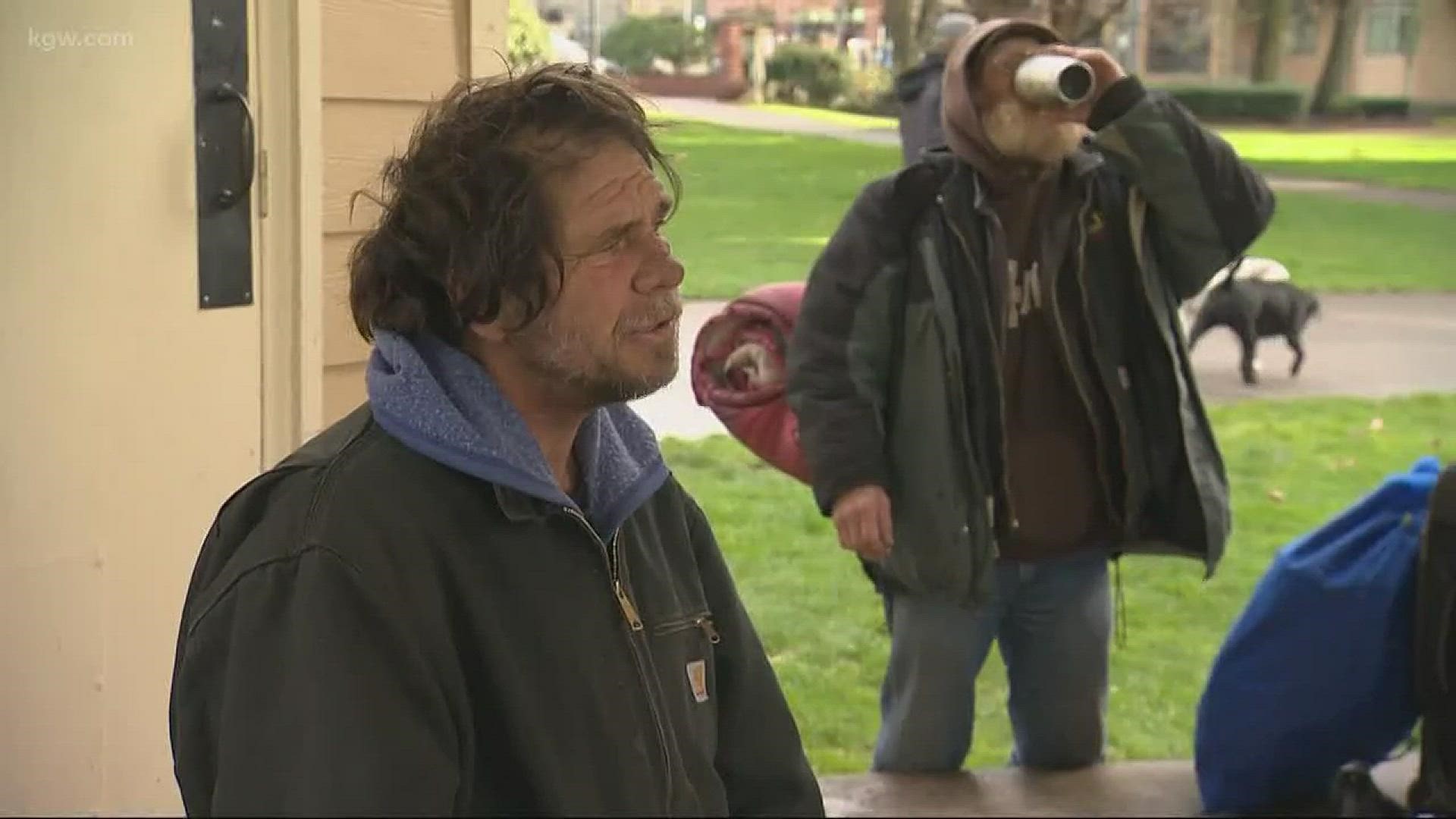VANCOUVER, Wash. -- In Vancouver’s Esther Short Park, a crowd of homeless campers Thursday sat and laid down on the ground, under a picnic shelter.
Getting rest, let alone sleep, outside is a constant struggle.
“It sucks,” said Joe Bob Liles. He came to Vancouver from Oklahoma late last year to see his 22-year-old daughter, who’s also homeless.
One woman, named Katie, said she often tries and fails to get a spot in local shelters at night. They fill up fast.
“I slept under the railroad and then up there,” she said, pointing past City Hall. “You can’t sleep, honey.”
So during the day they come to the park, but even there, places to sleep during the day are at a premium.
Officials confirm, a few years ago, the city installed armrests in the middle of their public park benches.
The purpose was, indeed, to prevent people from lying down.
“I think that’s not respectful,” said Liles. “I think, if somebody needs a nap, they can take a nap anywhere they want.”
Chad Eiken, director of the city’s Department of Community Economic Development, said Thursday the changes made to public spaces in Vancouver are subtle and piecemeal.
“It’s really case by case,” he said.
Aside from those prohibiting camping, the city doesn’t have any codes that speak to overarching strategies designed to deter homeless people from using or congregating in public spaces.
This week, another proposal with such an aim entered the “conceptual design” phase at City Hall. Leaders are looking to build a new entryway from I-5 onto 6th and C streets downtown. It would likely come lined with a curved rock wall, surrounded by large, jagged boulders.
“It's just trying to discourage pedestrians from what is a potentially unsafe area,” Eiken said of the proposal, which was requested by business owners years ago and could cost up to $150,000.
Eiken points out the design elements prevent anyone, not just homeless campers, from lying down on or camping in public spaces. Still, he knows advocates around the world are increasingly applying a controversial nickname to such changes: “hostile architecture."
“I was confused because I had never heard that word before or that phrase,” said Eiken, of The Columbian’s focus on it in an initial report on the entryway proposal.
Since then, there have been editorials for and against lumping the changes into the “hostile architecture” category.
“I would say it’s not the right terminology to use,” said Eiken. “The terminology came from some cities that have put maybe spikes where they didn’t want homeless people to sleep, and that’s certainly not what we’re talking about here,” he said.
This week, CNN posted a gallery, showing examples of the movement around the world. Pictures show window sills adorned with spikes in London and Paris. In Washington D.C., wooden benches arc up in the middle, making it easy for anyone lying down to roll off in their sleep. And in Germany, a restroom is illuminated solely by UV lighting, making it impossible for a heroin addict to see their veins.
In Seattle, the city recently started installing bike racks and 10-foot tall spiked fences on or around camping hotspots.
In Portland, the Oregon Department of Transportation installs boulders and fences at similar sites, but they don’t always work. Last fall, a camp inside one of those fences caught fire. Campers had cut through.
In Vancouver, like Eiken, advocates with the Share House are just now learning the purpose behind such design changes.
“I thought it was just landscape architecture,” said executive director Diane McWithey, who hadn’t heard the phrase until this week.
She added she’s disappointed to see campers strategically exiled from public spaces, but she understands the city's perspective.
“We have issues with people who are sleeping in a place that's not appropriate,” she said. “So, I think that the solution isn't not putting boulders in there but finding an alternative place before we do that, so that there's a place for them to go.”
Eiken on Thursday said staff hope to break ground on the new entryway, which will likely display the city’s name on the rock wall, this summer.

